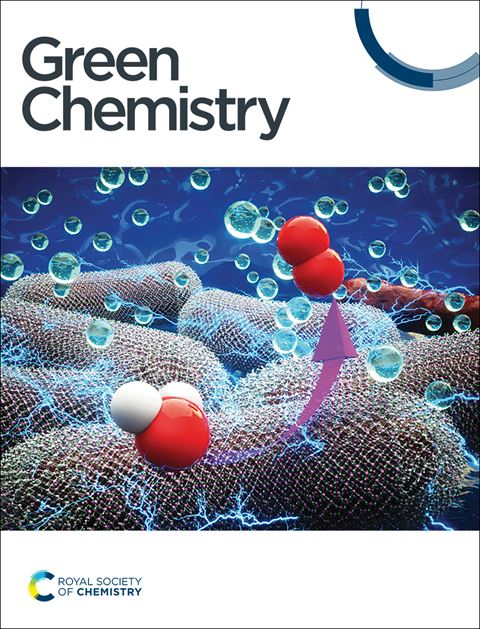Adding value to terpenes: copper-catalyzed oxidation of α-pinene in water under micellar conditions†
IF 9.3
1区 化学
Q1 CHEMISTRY, MULTIDISCIPLINARY
引用次数: 0
Abstract
The development of sustainable protocols for the conversion of renewables such as terpenes into value-added products is currently in high demand, which motivates the search for inexpensive and environmentally tolerable catalytic systems and reaction conditions. In the present study, three new prospective catalysts featuring mono-, di-, and tricopper(ii) cores were easily assembled in aqueous ethanol medium from copper(ii) ions, amino alcohol and carboxylic acid ligands. Their catalytic performance was evaluated in water under micellar conditions with 1% of PS-750-M surfactant, while studying the mild oxidation of α-pinene as an abundant, low-cost, and renewable feedstock. A water-soluble monocopper(ii) complex proved to be the most promising catalyst for the oxidation of α-pinene with tert-butyl hydroperoxide under micellar conditions, leading to high substrate conversion (87%) and good yields of the main products (tert-butylperoxy-2-pinene, verbenone, and pinene oxide). A partially water-soluble 1D coordination polymer based on dicopper(ii) units also showed a notable catalytic behavior. The effects of different reaction parameters and mechanistic features were investigated. This work opens up the use of micellar catalysis systems and aqueous-medium conditions for the oxidative functionalization of α-pinene and other terpene feedstocks into value-added products.

求助全文
约1分钟内获得全文
求助全文
来源期刊

Green Chemistry
化学-化学综合
CiteScore
16.10
自引率
7.10%
发文量
677
审稿时长
1.4 months
期刊介绍:
Green Chemistry is a journal that provides a unique forum for the publication of innovative research on the development of alternative green and sustainable technologies. The scope of Green Chemistry is based on the definition proposed by Anastas and Warner (Green Chemistry: Theory and Practice, P T Anastas and J C Warner, Oxford University Press, Oxford, 1998), which defines green chemistry as the utilisation of a set of principles that reduces or eliminates the use or generation of hazardous substances in the design, manufacture and application of chemical products. Green Chemistry aims to reduce the environmental impact of the chemical enterprise by developing a technology base that is inherently non-toxic to living things and the environment. The journal welcomes submissions on all aspects of research relating to this endeavor and publishes original and significant cutting-edge research that is likely to be of wide general appeal. For a work to be published, it must present a significant advance in green chemistry, including a comparison with existing methods and a demonstration of advantages over those methods.
 求助内容:
求助内容: 应助结果提醒方式:
应助结果提醒方式:


